ABSTRACT
PAARAT (???) attempts to conceptualize the indigenous revival of Mumbai’s soft tissue. The focus is on developing a transport oriented network that supports environment and ecology in the urban fabric surrounding the railway lines and the currently exposed mangroves. We explore Mumbai as the city of 7 islands and investigate its growth, expanding population, mobility boom and its subsequent effects on density, ecological degradation and segregation.
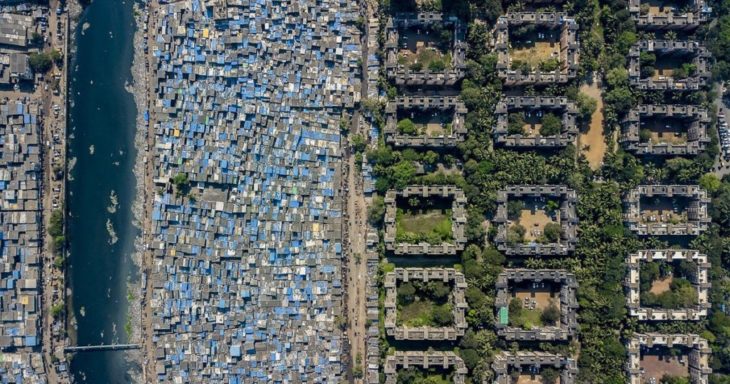
Photo Credits: Johnny Miller
HISTORIC DEVELOPMENT
Mumbai started as the city of seven islands. Colonized by the Portuguese and paid in Dowry to the British. Mumbai rose as the country’s financial capital in the industrial age. The manufacturing of cotton and its subsequent trade through ports made Mumbai one of the most thriving coastal cities in the region. Subsequently, British engineers pioneered the Hornby Vellard reclamation project to reclaim portions between these islands and expand the city’s growing needs. Subsequently, a transformation shift; the railways, were established to efficiently transport the British Loot in India. The establishment of the railways revolutionized mass mobility. In post-independence India, Mumbai quickly became one of the most populated cities in Asia. New settlements and suburbs grew along the railway lines, transporting millions of people to and from work.
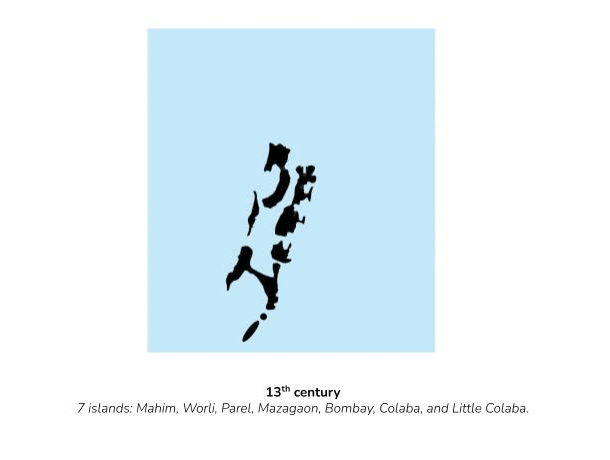
By late 1990’s and early 2000’s the city’s population had crossed 10 million people, forcing the city to increase its inward mobility. The concreting of the city’s soft tissue started to take place, exponential reclamation and encroachment of rivers, tributaries, mangroves and even the surrounding national forest put tremendous pressure on the health and safety of the city’s urban fabric. Since 2010, the city has been witnessing a mobility boom, 13 new railway lines, 2 superhighway projects, coastal and eco-systemic reclamation is underway with the city holding upwards of 18 million people.
AREAS OF INTEREST
 We chose to explore 2 primary factors: The Railway System & The Mangrove Network. The idea here was to study how the present mobility systems can be transformed to create spaces of public interest. We are looking at the primary railway network as a segregator that can be modified to create a continuous public access corridor hosting a variety of different activities and functions.
We chose to explore 2 primary factors: The Railway System & The Mangrove Network. The idea here was to study how the present mobility systems can be transformed to create spaces of public interest. We are looking at the primary railway network as a segregator that can be modified to create a continuous public access corridor hosting a variety of different activities and functions.
PAARAT PROJECT
Paarat attempts to explore culture & aspirations whilst re-imagining mobility in a way that is adaptive in nature, to refocus on Mumbai’s soft tissue and its enhancement.
 We understand that public spaces have become niches in Mumbai. Lower connectivity and privatization of land essentially creates segregation across the city. The inadequate and unsustainable mobility infrastructure leads to a deteriorating coastline, creating trash islands and objectively affecting the natural ecology and flood protection of the city. Moreover, the mobility itself is overburdened by the ad-hoc infrastructure that supports it currently.
We understand that public spaces have become niches in Mumbai. Lower connectivity and privatization of land essentially creates segregation across the city. The inadequate and unsustainable mobility infrastructure leads to a deteriorating coastline, creating trash islands and objectively affecting the natural ecology and flood protection of the city. Moreover, the mobility itself is overburdened by the ad-hoc infrastructure that supports it currently.
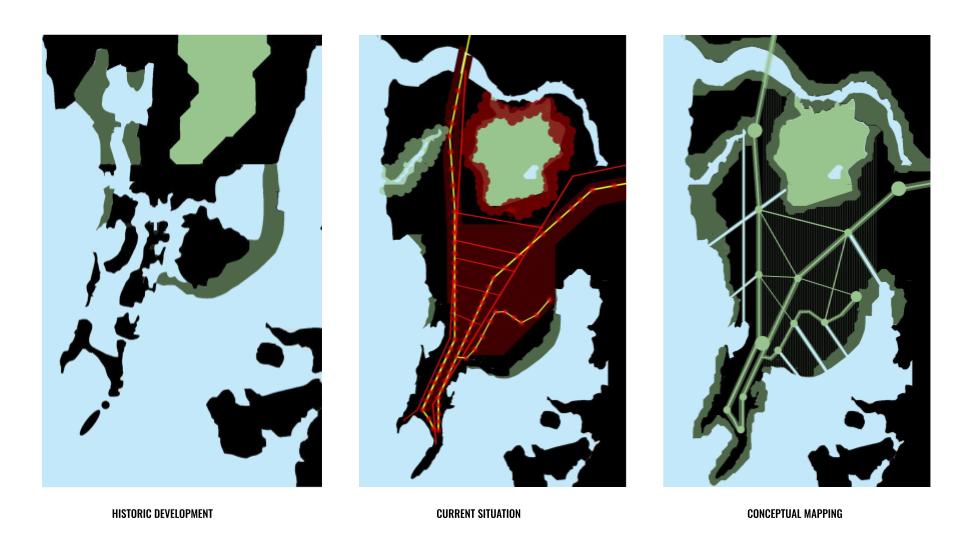
The idea is to reclaim Mumbai’s ecological soft tissue. Driving mass mobility underground and supporting it with a vision for additional options of travel. Creating a continuous network of public plaza’s along the linear expanse of railway lines will help the city generate several kilometers of shared public spaces for locals.
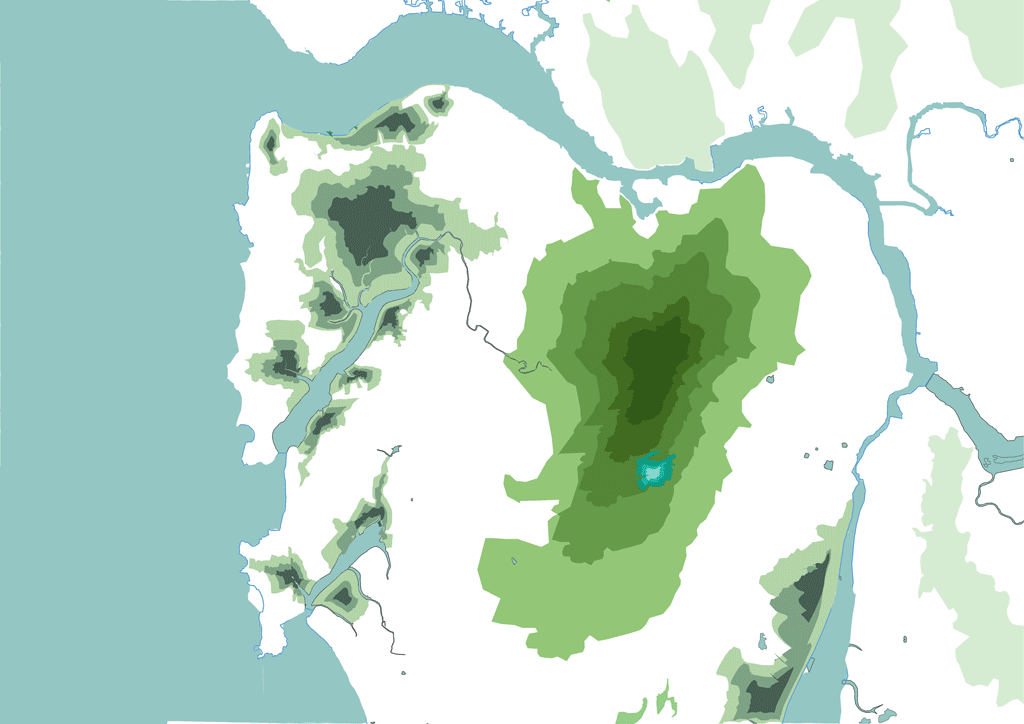
Simultaneously, we look at preserving and enhancing the current Mangroves network around the city to essentially create a natural coastal resistance of the city. One strategy is to reconnect Mumbai to it’s water and gradually push the concentrated urban forest into the city. We start making channels for the rivers/creeks that come into the city and connect them to the forests, ponds and other natural reservoirs.
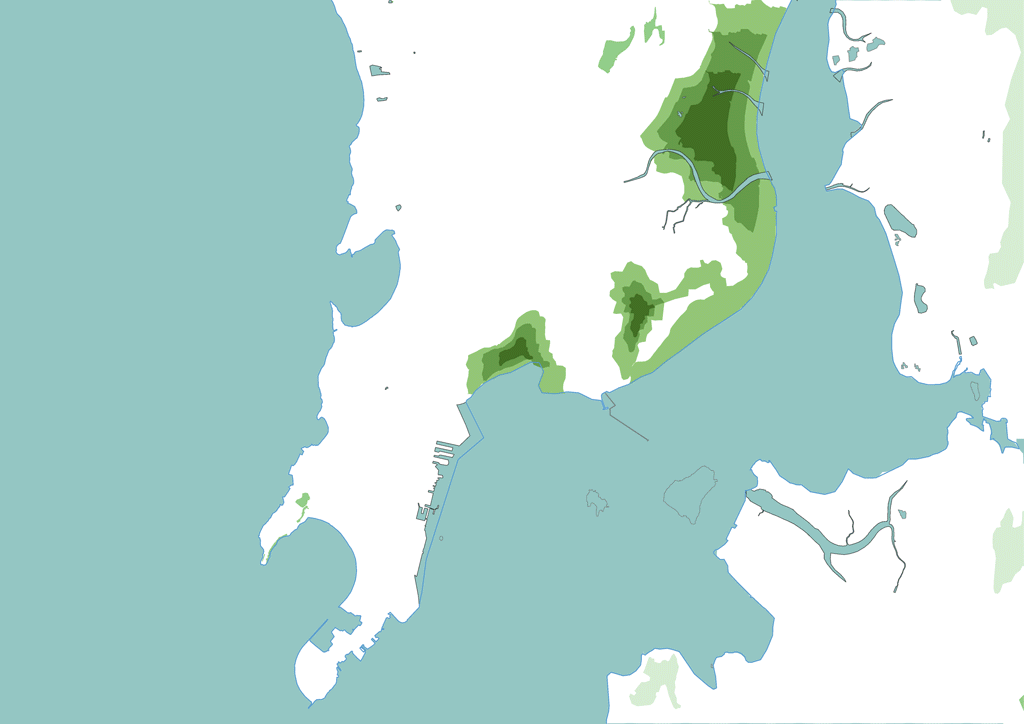
The objective is to Integrate play, entertainment, retail and ecology into a mobility driven revival project.

Credits:
PAARAT is a project of IAAC, Institute for Advanced Architecture of Catalonia developed in the Master in City & Technology 2021/22 by Students: Can Xu, Kriti Nirmal & Parshav Sheth and Faculty: Manuel Gausa & Nicola Canessa